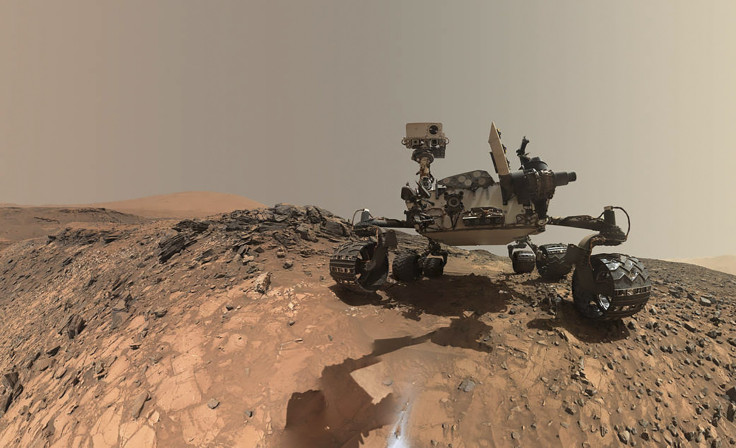Alien Life On Mars? New Findings Show It Was Possible For 100 Million Years Or More

Believers of alien life received some added evidence to confirm their theory. Drawing data from NASA’s Mars rover Curiosity, scientists reportedly believe Earth’s closest neighbor was capable of sustaining life for tens or even hundreds of millions of years, Space.com reported Wednesday.
The rover, which began scouring inside Mars’ Gale Crater since in August 2012, has spent the last four years drilling out and analyzing various rocks on the planet’s surface along an elevation range as high 650 feet, a wide swath of terrain that’s allowed scientists to determine the assertion that life existed on Mars. Curiosity has slowly but surely climbed the 3.4-mile high Mount Sharp, which skies out of the crater’s center.
So, during that wide time frame, analysis of Curiosity’s findings show that the environment within the crater did change distinctly but not enough to completely rule out life ever existed on the fourth planet from the sun.
"For that entire history [of Mars], it seems to have been favorable" for life, Curiosity science team member and California Institute of Technology-Pasadena geologist John Grotzinger told Space.
The findings also allow NASA’s scientists to gain a better foothold in the planet’s potential history of past life. In March 2013, seven months into Curiosity’s mission, Space.com also reported that primitive life like microbes could have also lived on Mars and that a habitable lake and stream system also could have existed billions of years ago.
Linking that discovery to the most recent findings, scientists have figured that the lake first contained fresh water, which eventually became more acidic over time and then salty, and likely went through a cycle of drying up and refilling, Grotzinger said.
Yet, even as the water fluctuated, microbial life was still possible and the further discovery of the element boron and minerals as Curiosity has chipped away at the terrain only strengthen the case for life on the planet.
"Variations in these minerals and elements indicate a dynamic system," Grotzinger said.
"They interact with groundwater as well as surface water. The water influences the chemistry of the clays, but the composition of the water also changes. We are seeing chemical complexity indicating a long, interactive history with the water. The more complicated the chemistry is, the better it is for habitability. The boron, hematite and clay minerals underline the mobility of elements and electrons, and that is good for life."
© Copyright IBTimes 2024. All rights reserved.





















